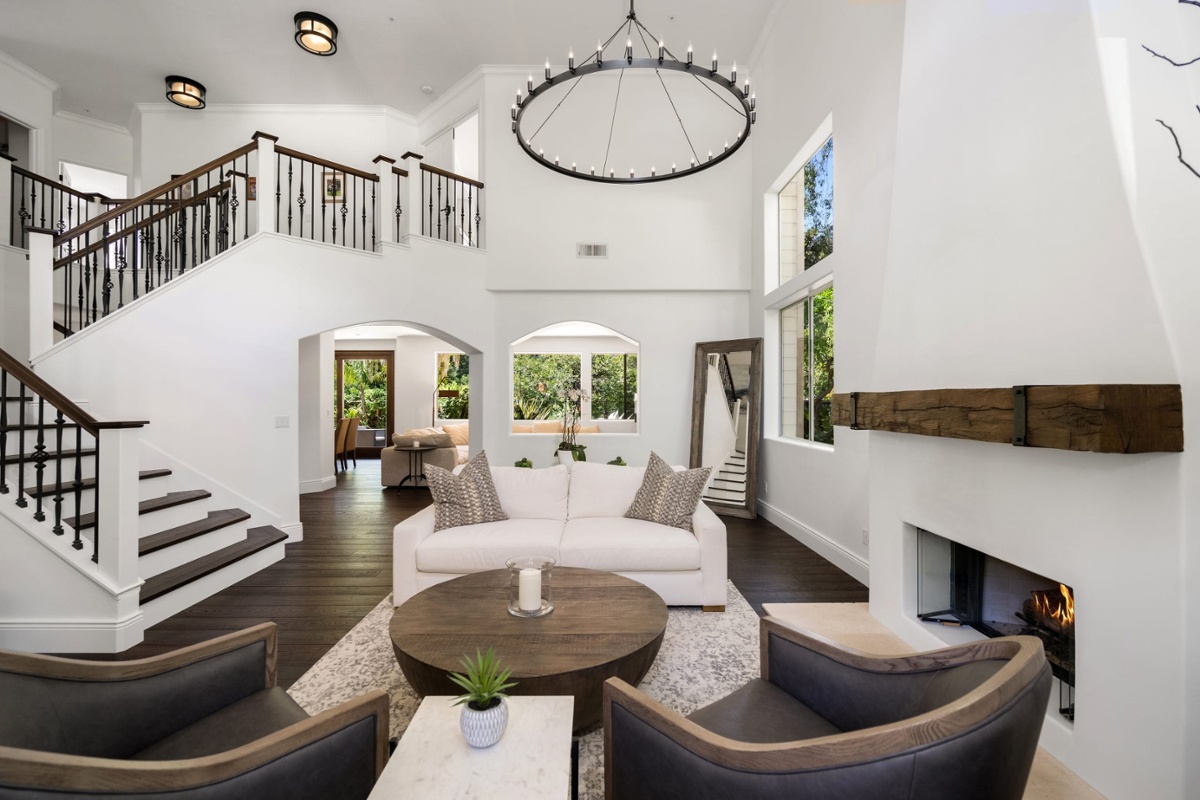When you think of the term "lighting," what usually comes to mind? While many of us often think of lighting as simply flipping a switch to banish the darkness, experts in the home design and remodeling sectors would tell you that light is a powerful tool, capable of shaping mood, enhancing functionality, and highlighting architectural beauty. The secret? Layered lighting.
Think of your home as a stage, and light as the director. A single overhead bulb provides basic illumination, but it lacks depth and nuance. Layered lighting, on the other hand, strategically combines different types of light sources to create a well-lit, dynamic, and inviting space. Let's break down the key players:
The Foundation: Ambient Lighting
Ambient lighting, also known as general lighting, provides overall illumination to a room. It's the soft, comfortable glow that allows you to see and move around safely. Think of it as the backdrop of your lighting design.
- Examples: Ceiling fixtures, chandeliers, recessed lights, floor lamps with upward-facing shades, and even natural light filtering through windows.
- Benefits: Provides overall visibility, reduces harsh shadows, and creates a sense of spaciousness.
The Workhorse: Task Lighting
Task lighting is precisely focused light designed to help you perform specific activities efficiently and comfortably. Without adequate task lighting, you might strain your eyes or struggle with detail-oriented tasks.
- Examples: Desk lamps, under-cabinet lights in the kitchen, reading lamps beside a chair, and pendant lights over a kitchen island.
- Benefits: Improves focus, reduces eye strain, enhances productivity, and adds a layer of functionality to specific areas.
The Artist's Touch: Accent Lighting
Accent lighting is all about drama and highlighting. It's used to draw attention to specific architectural features, artwork, plants, or decorative objects. It adds depth, visual interest, and personality to a room.
- Examples: Spotlights, track lighting directed at artwork, uplights illuminating a textured wall, and picture lights.
- Benefits: Creates visual focal points, adds depth and dimension, and showcases your home's unique character.
Crafting Atmosphere Through Light
The beauty of layered lighting lies in its ability to transform a space. Here are some common ways that you can use layered lighting to create a breathtaking atmosphere:
- Bright and Energetic: Combining strong ambient light with focused task lighting creates a vibrant and productive atmosphere, ideal for home offices or kitchens during meal prep.
- Cozy and Relaxing: Dimming ambient lights and relying on soft task and accent lighting can create a warm and inviting atmosphere perfect for unwinding in the living room or bedroom.
- Dramatic and Sophisticated: Strategic use of accent lighting can highlight architectural details and artwork, lending an air of elegance and drama to a space. Think about highlighting a stone fireplace or illuminating a striking sculpture.
Elevating Your Space: Architectural and Design Integration
Beyond simply placing lamps, consider how architectural and design elements can enhance your layered lighting scheme:
- Dimmers: Installing dimmers on various light sources gives you ultimate control over the intensity and mood of a room.
- Smart Lighting Systems: These allow you to control your lights remotely, set scenes, and even automate lighting based on time of day or occupancy.
- Light Shelves and Coves: Integrating built-in architectural elements, like light shelves or coves, can provide indirect ambient lighting, creating a soft and diffused glow.
- Reflective Surfaces: Mirrors and light-colored walls and ceilings can help to bounce light around a room, maximizing the effectiveness of your lighting scheme.
- Window Treatments: Consider how different window treatments affect natural light throughout the day, and plan your artificial lighting accordingly. Translucent shades can diffuse light beautifully, while blackout curtains offer complete control.
- Glass Elements: Glass doors, shelving, and decorative objects can allow light to penetrate further into a space and create interesting visual effects.
By understanding the principles of layered lighting and thoughtfully incorporating different types of light sources and design elements, you can transform your home from simply being illuminated to being truly radiant, comfortable, and reflective of your unique style. So, take a look around your space – what stories could light tell in your home?
For more information, please visit our website and download our eBook: ‘A Guide To Hiring A Remodeler.’ Our eBook Guide provides additional resources and includes helpful Worksheets that will make the process of Picking the Right Remodeling Expert For the Job stress-free. To get your own project started, get in touch with us or give us a call at (831) 566-9499.

.jpg)
.jpg)

